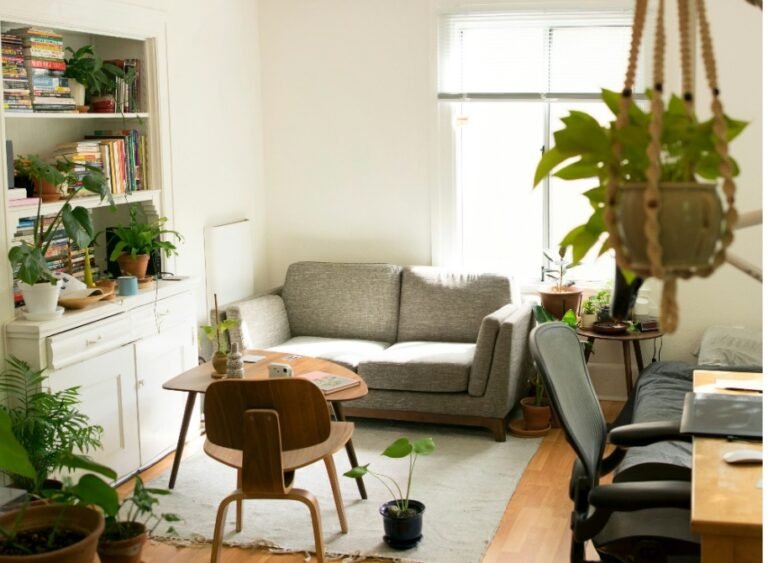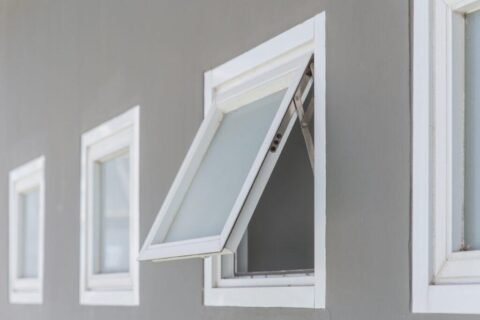Designing a home that offers both style and comfort requires careful thought, creativity, and practicality. In today’s busy world, homeowners are increasingly prioritizing functional spaces that cater to their specific needs while maintaining a soothing and inviting atmosphere.
Whether you’re working with a large or compact layout, each space can be optimized for functionality without sacrificing comfort.
In this article, we will explore various ways to create functional spaces in your home, from well-organized living rooms to rejuvenating bathrooms.
Organizing Your Living Room for Both Comfort and Utility
The living room is the heart of most homes, often serving as a hub for relaxation, entertainment, and family gatherings. Designing a functional living space begins with a clear understanding of your lifestyle needs. For instance, if you frequently host guests, incorporating flexible seating arrangements and multifunctional furniture like storage ottomans or coffee tables with compartments can help keep the area clutter-free.
Selecting the right furniture is key to maintaining both function and comfort. Consider investing in a sectional sofa with a chaise for lounging, paired with an accent chair for extra seating. When choosing furniture, opt for pieces that offer storage or can be easily rearranged to suit different occasions. In smaller spaces, wall-mounted shelves, built-in cabinetry, and media consoles can maximize available storage without overwhelming the room.
Lighting also plays a crucial role in creating a comfortable living environment. Use a combination of ambient, task, and accent lighting to enhance the space. Adjustable floor lamps or table lamps can provide focused lighting for reading or other activities, while soft ambient lighting from ceiling fixtures creates a welcoming glow.
By balancing these elements, you can transform your living room into a multifunctional area that promotes both utility and relaxation.
Creating a Functional and Relaxing Bathroom Oasis
Bathrooms are often overlooked in terms of design, yet they play a significant role in daily comfort. A well-thought-out bathroom design improves the functionality of the space and creates a calming environment for self-care routines.
If your bathroom feels cramped or outdated, a renovation might be in order. Consulting experienced bathroom remodelers can provide insight into modern design options and space-saving solutions.
When remodeling, focus on storage solutions that can reduce clutter. Floating vanities, built-in medicine cabinets, and strategically placed shelving can free up valuable counter space. For a spa-like experience, consider incorporating features such as rain showers, deep soaking tubs, or heated flooring. These elements elevate comfort and add a touch of luxury to the space.
Lighting, ventilation, and materials are also crucial aspects of a functional bathroom. Adequate lighting around mirrors provides better visibility for grooming tasks, while dimmable fixtures can create a more relaxed ambiance during baths. Good ventilation is essential for maintaining air quality and preventing moisture build-up, so consider installing a quality exhaust fan.
By blending function with comfort, you can transform your bathroom into a personal sanctuary that supports relaxation and rejuvenation.
Designing a Productive and Comfortable Home Office
As more people embrace remote work, the home office has become an essential part of modern living. Whether you’re working full-time from home or need a dedicated space for occasional tasks, creating a home office that promotes productivity while maintaining comfort is essential.
Start by selecting a quiet, well-lit area in your home that can be dedicated entirely to work. Natural light is ideal for boosting productivity and mood, so placing your desk near a window can be beneficial. However, for those late-night work sessions, task lighting, like an adjustable desk lamp, is essential. Avoid harsh overhead lighting, as it can lead to eye strain over time.
Ergonomics should be a top priority when selecting furniture. Invest in an ergonomic office chair that supports good posture, and choose a desk with ample space for your equipment and documents. Consider adding organizational tools like filing cabinets, desk trays, or floating shelves to keep your work materials organized. A clutter-free workspace enhances focus and makes it easier to navigate daily tasks.
For added comfort, personal touches like artwork, plants, or a cozy rug can help create a more inviting and personalized environment. Incorporating these elements will transform your home office into a space that fosters both productivity and comfort, helping you maintain a better work-life balance.
Optimizing Kitchen Layouts for Functionality and Flow
The kitchen is another area where functionality reigns supreme, especially in homes where cooking is a central activity. A well-organized kitchen makes meal preparation more efficient and enhances the overall comfort and enjoyment of the space. When designing or reorganizing your kitchen, consider how you use the space most frequently.
The kitchen’s layout plays a major role in its functionality. Popular kitchen designs such as the L-shape, U-shape, or galley layouts offer efficient workflows, particularly when the kitchen’s main areas—cooking, cleaning, and storage—are arranged in a “work triangle” pattern. This layout minimizes unnecessary movement and maximizes the kitchen’s efficiency.
Ample storage is key to reducing countertop clutter. Consider installing deep drawers for pots and pans, pull-out shelves in cabinets for easy access to pantry items, and a kitchen island that offers both additional storage and seating. Open shelving can also be used to store frequently used items while adding a touch of style.
Comfort in the kitchen can be achieved through thoughtful design choices. Incorporating bar stools at a kitchen island or adding a cozy breakfast nook creates a welcoming space where family and friends can gather. Additionally, under-cabinet lighting can brighten workspaces while adding warmth and ambiance to the room.
The Importance of Functional Bedroom Design
Bedrooms are the ultimate retreat, and their design should prioritize both comfort and functionality. While the primary focus is on relaxation, a functional bedroom also incorporates elements of practicality, particularly when it comes to storage and layout.
To start, choose a bed frame that complements the size of the room while offering additional storage if needed. Bed frames with built-in drawers or storage boxes can be incredibly useful in smaller spaces. Nightstands with drawers or shelves provide easy access to essentials without creating clutter.
Closet organization is another important factor in maintaining a functional bedroom. Utilize vertical space with high shelves or hanging organizers to maximize storage. If closet space is limited, consider investing in a freestanding wardrobe or additional shelving units.
Lighting is another crucial aspect of bedroom design. Soft lighting, such as bedside lamps or wall-mounted sconces, creates a peaceful ambiance for winding down at the end of the day. Dimmer switches can also allow you to control the lighting based on your mood.
Incorporating calming colors, soft textiles, and personal decor like artwork or plants can further enhance the room’s comfort. These elements work together to create a bedroom that is both functional and serene, offering a perfect balance between practicality and relaxation.
All in all, creating functional spaces in your home doesn’t mean sacrificing comfort. With thoughtful design choices, you can optimize every room for maximum utility while maintaining a cozy and inviting atmosphere.
Passionate content writer and savvy blog publisher, Aamir crafts compelling stories and insightful articles that captivate and inform. With a knack for blending creativity and strategy, they bring fresh perspectives to every piece. Dive into their world of words and discover content that resonates.





